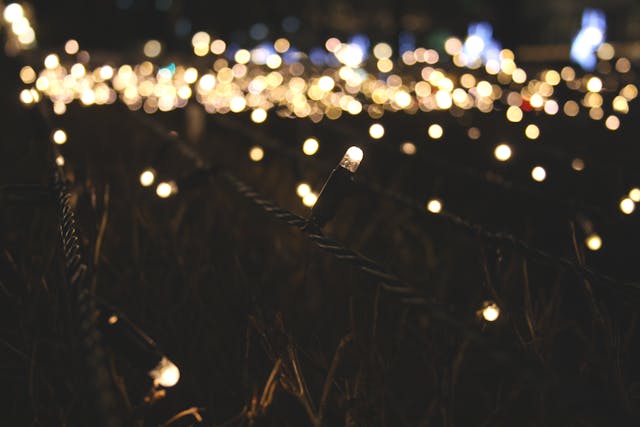Outdoor lighting adds beauty, security, and functionality to any property. It can highlight your landscaping, guide guests safely to your door, and deter intruders after dark. But while you’re enjoying the ambiance and improved visibility, there may be another group that’s drawn to your lights—pests. From flying insects to small animals, certain types of lighting and placement choices can unintentionally turn your yard into a magnet for unwanted visitors.
Understanding how outdoor lighting impacts pest activity is important for any homeowner looking to maintain a clean, safe, and pest-free environment. Fortunately, with a few simple adjustments, you can enjoy the benefits of exterior lighting without the bug-related consequences.
Why Light Attracts Insects and Other Pests
Many insects are naturally drawn to light, a behavior known as phototaxis. Most flying insects, especially moths, beetles, mosquitoes, and flies, exhibit positive phototaxis, meaning they move toward light sources. Outdoor lighting interferes with their internal navigation systems, which often rely on natural light sources like the moon. Artificial lights confuse them, causing them to hover and swarm around fixtures for extended periods.
Insects aren’t the only creatures affected. Spiders follow the bugs, building webs near lights to catch their prey. Frogs and small lizards may gather where insects are abundant, and even rodents might be attracted to the activity or use the illumination to scout for food. In this way, a single porch light can set off a small ecological chain reaction around your home.
Common Lighting Mistakes That Invite Pests
One of the biggest mistakes homeowners make is choosing the wrong type of bulb. Bright white or blue-toned lights, especially those that emit ultraviolet (UV) light, tend to attract insects more aggressively. Traditional incandescent and halogen bulbs are particularly guilty of this, as they give off a lot of heat and UV rays. The hotter the light, the more appealing it becomes for flying pests.
Another mistake is placing lights too close to doors and windows. When insects are drawn to fixtures near entry points, it increases the likelihood that they’ll find their way inside. If you keep lights on for extended periods, especially throughout the night, you’re essentially offering an open invitation to nearby bugs and animals.
Excessive brightness is also a problem. High-intensity lights illuminate large areas, pulling in pests from further away. While this might seem beneficial for visibility or security, it can end up increasing insect concentration near your home, especially in warmer months.
Smarter Outdoor Lighting Strategies for Pest Control
If you want to keep your outdoor lights while minimizing pest problems, thoughtful planning and product selection are key. One of the most effective strategies is to use lighting that emits a warm or yellow hue. These lights are far less attractive to insects and can still provide plenty of illumination for outdoor spaces. LED lights with a warm color temperature are a great alternative to traditional bulbs.
Another helpful tactic is to reposition lighting fixtures so they are not directly adjacent to entry points. Place lights farther from doors and windows and angle them downward or toward the ground instead of outward. This not only limits pest intrusion but also reduces light pollution.

Using motion-sensor lighting is another smart option. Rather than leaving lights on all night, motion-activated lights only turn on when needed. This reduces the time pests are exposed to illumination and can make your home less attractive to them in the long run.
If you use decorative or landscape lighting, consider directing it downward or using shielded fixtures. These reduce the radius of light exposure and help keep bugs away from patios, walkways, and gathering areas. For lights that must stay on throughout the night, opting for lower-wattage bulbs can also help limit insect activity.
Additional Ways to Prevent Pests Around Outdoor Lighting
While adjusting your lighting setup plays a major role in pest control, it’s also important to maintain the surrounding areas. Keep the areas around your outdoor lights clean and free of standing water, fallen leaves, or debris, as these can provide breeding grounds or shelter for bugs.
Trim back vegetation and overgrown bushes near your lighting fixtures. Dense plant growth gives insects and small animals places to hide, nest, and feed. When lighting is placed too close to plants, the warmth can make them an even more inviting shelter for pests.
Regularly clean the light fixtures themselves. Dead insects can accumulate inside or around the fixtures, attracting scavengers or building up to the point that light output is affected. A quick wipe-down every few weeks can help reduce this issue.
For homes in pest-prone areas, it may also be worth coordinating your lighting setup with a pest control professional. They can help you identify problem spots and offer targeted recommendations that align with your landscape and lighting preferences.
When to Seek Professional Help
If you’ve adjusted your lighting and still notice a surge in pest activity around your home, it may be time to consult a professional. Persistent insect infestations, spider webs covering your fixtures, or signs of animals near your home at night are all indicators that the problem may go beyond lighting choices alone.
Pest control specialists can evaluate the full scope of the issue and offer a treatment plan to target both the pests and the conditions that attract them. This might include sealing gaps, treating breeding areas, or installing pest-repelling fixtures. In cases where lighting placement is contributing to the problem, they can also coordinate with your electrician or landscape designer to create a more balanced and bug-resistant environment.
Final Thoughts
Outdoor lighting doesn’t have to come at the cost of inviting pests. By understanding how light attracts insects and animals—and making intentional choices about bulb types, fixture placement, and brightness—you can enjoy a beautifully lit exterior without turning your home into a hotspot for bugs.
Whether you’re lighting a walkway, illuminating a patio, or enhancing curb appeal, it pays to think beyond just the aesthetic. Safe, well-placed, and pest-conscious lighting can help keep your home both inviting and protected.
